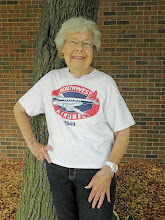The Organic Stratocruiser
Always up to a challenge, the NWA airframe engineering group figured out how to install it. Cliff Northfield was the project engineer. As with most things screwball happening in airplanes, the Federal Aviation Administration wanted to know all about it. Plans and drawings went to the regional office in Kansas City. Back came suggestions.
Felix Perry, retired NWA Chief Airframe Engineer, recalls that two passenger seats were removed just forward of the main cabin door. The electric organ was mounted on, and bolted to, a ¾” thick common plywood panel which was secured to the floor at the seat attachment locations. Braces and cables had to be affixed to keep the one hundred pound instrument in place when the plane took off, or when the propellers reversed, braking the ship to a stop on landing. A special organ bench had to be built. An electric converter was installed to supply 115 volt current, needed to operate the organ, from the Stratocruiser’s 28 volt system. The organ music flowed through the ship’s six public address system loudspeakers, which were modified from 5 inches to 8 inches in size. After installation and with all systems operating, a check was made to be sure the sound and vibrations from the organ music didn’t disrupt pilot radio communications or instruments. Details!
Then wouldn’t you know the Fed’s in Kansas City came up with a few more things that needed to be done:
- A placard had to be fastened to the organ bench reading: NOT TO BE OCCUPIED DURING TAKEOFF OR LANDING.
- The corners of the organ case had to be padded.
- The organist had to have a regular seat in which to ride when he or she was not playing during those takeoffs and landings, or during any possible rough weather.
- The inside of the organ case had to be strengthened and braced.
Six professional organists from the Minneapolis-St. Paul area; C.R. ‘Swaney’ Swanson, president and owner of the Northwest Organ Co., C. R. Swanson, Jr., Leonard Leigh, KSTP radio and television, Roger Sonnichsen, Heidelberg Lounge, Len Resig, Leamington hotel and Richard Clausen, Criterion restaurant took turns accompanying Ship 709 wherever it went. They played on a half-hour, 15 minute interval basis. Passengers could sit back and listen, or request their favorites. Songs requested on the first flight into New York included “Autumn Leaves,” ”Broken Down Merry Go Round,” “My Funny Valentine,” “Apple Blossom Time,” “Stardust” and “What’ll I do?” Kind of takes one back, doesn’t it?
As with all things innovative, there was an occasional glitch. Take, for instance, the flight taken by George Grim, a popular columnist for The Minneapolis Morning Tribune. He was flying from New York to Minneapolis nonstop on the plane with the electric organ - - but with no organist. Some passengers aboard knew George, and knew that he had an electric organ in his home and could play. They “grasped me by the lapels and named me official orgelspieler” he recounted in his next column. A “convivial group of passengers gathered by the organ singing lustily everything from “Jingle Bells” to “When Irish Eyes are Smiling” to “Silent Night.” We sang our way merrily home twenty thousand feet up (well, way up, anyhow.)” he wrote.
Overall passenger reaction to in-flight organ music was favorable, outside of a very few who brought up the ‘captive audience’ principle. Most said things like, “”It makes the flight more informal;” “Wonderful, Beautiful;” “I don’t care what you play. It’s nice;” “I like it very much.” And even this: “That’s one thing I’ll say about Northwest. You’re not asleep at the switch. You do more than provide transportation - - you make traveling a pleasure.” Yes. That was actually said. I have names. It almost makes me cry.
They were lustily singing in the public relations department at Northwest Airlines, too. News articles and photos of the airborne musical entertainment on Ship 709 were published in newspapers from sea to shining sea. A scrapbook of them can be viewed at the NWA History Centre in Minneapolis. For info and directions: http://www.nwahistory.org/






0 Comments:
Post a Comment
Subscribe to Post Comments [Atom]
<< Home